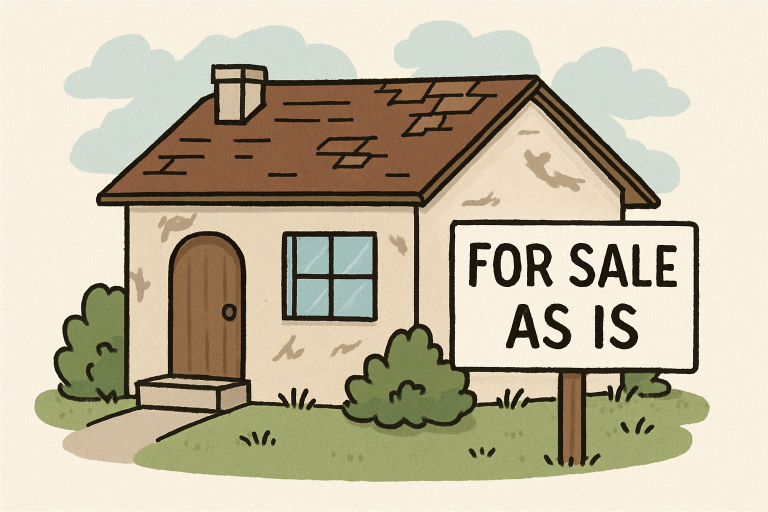What Does ‘As-Is’ Mean in Real Estate?
In real estate, selling a home ‘as-is’ means offering the property in its current state, without making any repairs or improvements before the sale. This type of sale can attract buyers willing to take on potential renovations or investors seeking a property at a discount. However, it also puts the onus on the buyer to accept any existing issues, big or small, with the home. Connecting with experienced investors like best buyers can streamline the process, especially when time or finances prevent major repairs.
While this sales strategy may seem straightforward, it comes with specific responsibilities and expectations for sellers and buyers. Sellers benefit from a faster, hassle-free transaction, but should also be transparent about the property’s condition from the start. This is where the’ as-is’ concept brings opportunity and responsibility.
Many buyers actively seek out as-is properties for the potential of a good deal. Whether you’re pressed for time or facing significant repairs, working with professionals can make all the difference.
Top Reasons to Consider an ‘As-Is’ Sale
There are several compelling reasons why homeowners choose to sell their property as-is. Rapid job relocations, inheritance of unwanted properties, or unexpected life events may require a quick exit from homeownership. Another common motivator is the cost associated with repairs and renovations—when the necessary investments outweigh potential returns, an as-is sale saves time, money, and stress. Requesting a free offer can further simplify the process, giving sellers a clear picture of their home’s value without commitment. Sellers facing foreclosure or financial hardship also turn to as-is transactions for a faster resolution without additional spending.
Pros and Cons of Selling a Home ‘As-Is’
- Pro: Minimal preparation required—skip repairs, updates, and renovations.
- Pro: Attracts cash buyers and investors eager for a straightforward, quick purchase.
- Con: Homes typically sell for less than those in move-in-ready condition.
- Con: Can limit your buyer pool, as some loan programs require certain standards and repairs.
The Consumer Financial Protection Bureau notes that market conditions can affect which option is best for you, so it’s wise to research the current climate before listing as-is.
Key Steps in the ‘As-Is’ Home Sale Process
- Decide whether to hire a real estate agent with experience handling as-is transactions or manage the sale independently.
- Research your local market and price the property per comparable as-is sales nearby to attract interest without sacrificing value.
- Prepare a comprehensive and honest seller disclosure, detailing any known issues or repairs needed to maintain legal protection.
- Market the property openly, emphasizing its potential and being transparent about any flaws or limitations.
- Expect negotiation; most buyers will conduct inspections and may request further price adjustments or concessions.
- As state requirements dictate, close the sale using a reputable title company or real estate attorney to ensure all paperwork is compliant and the transaction is secure.
Common Misconceptions About ‘As-Is’ Sales
Many believe that only severely damaged or neglected homes are sold as-is, but this isn’t always true. Rental properties, inherited homes, or those needing cosmetic updates often succeed in as-is sales. Another myth is that as-is sales relieve sellers of disclosure obligations—by law, major defects and issues must be disclosed to buyers. Finally, some assume these homes are hard to sell, yet many buyers and investors actively seek as-is opportunities for potential savings and customization.
Smart Pricing Strategies for ‘As-Is’ Properties
Setting the right price is critical for an as-is property. Analyze recently sold homes in similar condition and neighborhoods. Consult local market data or consider a professional home valuation to strike a balance between attracting serious buyers and minimizing financial loss. Sustainable pricing and honest property representation encourage trust and can speed up the transaction.
Legal Obligations and Seller Disclosures
Selling a home as-is does not mean you’re free from legal responsibilities. Sellers must disclose all known material defects, such as foundation issues, roofing problems, or plumbing leaks. Failing to disclose can result in lawsuits or financial penalties down the line. For any uncertainties, it’s wise to consult a real estate attorney to ensure you remain compliant with local disclosure requirements.
Making the Most of an ‘As-Is’ Sale
Selling a home as-is can be a strategic choice for homeowners seeking speed, simplicity, and reduced upfront costs. While the process removes the need for repairs and renovations, it still requires careful pricing, honest disclosures, and clear communication with potential buyers. Understanding the pros, cons, and legal obligations helps you avoid pitfalls and attract serious offers. By working with experienced professionals, researching your market, and setting realistic expectations, you can turn an as-is sale into a smooth, efficient, and financially sound transaction.
